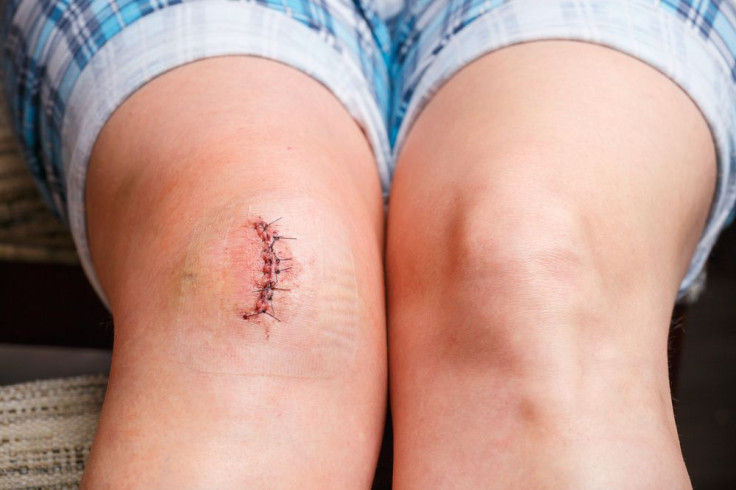Treating Scars And Wounds: Scientists Explore Regeneration Process Of Skin And Hair In Search Of New Medicines

In a new study of mice, researchers explored a key protein and cell communication process through which mammals can regenerate hair follicles and skin while healing from wounds. Looking ahead, the Johns Hopkins researchers believe an as-yet-undiscovered drug that has the power to stimulate this protein potentially might decrease scarring as wound healing takes place, which in turn could promote skin and hair follicle regeneration.
Senior study author Dr. Luis A. Garza, associate professor of dermatology at the Johns Hopkins University School of Medicine, described the protein in a press release “as a master regulator of regeneration in the skin.”
Why is the healing of wounds so fascinating? Skin itself is remarkable because, despite constant cell turnover, its features are maintained under normal conditions. Following a wound, skin features and what Garza refers to on his laboratory website as skin “identity” are typically lost — in other words, a scar appears — even if under rare situations complete regeneration can occur.
Garza and his colleagues based their current study on the knowledge that skin damage often triggers regeneration. For instance, the everyday cosmetic procedures known as chemical peels, dermabrasion, and laser treatments have been doing exactly that for decades. Scientists also understand that damaged skin releases double-stranded RNA (dsRNA), which normally is a sign of viral infection, and this is sensed by a particular type of protein, the toll-like receptor 3 (TLR3).
"Toll-like" is the perfect description for this protein, which you might conceptualize, to some extent, as a toll-booth on a highway. Within your body, the complex job of TLR3 is to control your immune response by helping to recognize pathogens and then helping to activate the defense against them. Following a wound, TLR3 also triggers two genes, IL6 and STAT3, and other molecules which promote hair follicle regeneration and hair development, as well as one more gene, EDAR, which plays a role in skin development.
Garza says one implication of the current study is that all those cosmetic dermatology techniques of “skin rejuvenation” are likely working through dsRNA pathways and TLR3.
And this is what he and his colleagues set out to explore in the current study. Specifically, the research team compared protein expression of genes in two separate groups of mice: one group lacking the ability to regenerate skin and hair after a wound, the other group possessing this ability. Expression of TLR3 was three times higher in the mice that were able to regenerate hair. In other experiments, Garza and his colleagues discovered that regeneration was nearly abolished in mice bred to be deficient in TLR3 and that expression of TLR3 was five times higher in scratched human skin cell samples compared to healthy skin cell samples.
Looking to the future, Garza said drug companies already have begun to develop products meant to activate TLR3, though he cautions these will take years of continued work. Importantly, it’s not just surface skin that may someday be regenerated with the help of medicine.
“A lot of human disability is from scarring,” Garza stated in a press release. “After a heart attack, we're really good at replacing the blood flow, but it's the scar on the heart afterward that's the real problem.”
Source: Nelson AM, Reddy SK, Ratliff TS, et al. dsRNA Released by Tissue Damage Activates TLR3 to Drive Skin Regeneration. Cell Stem Cell. 2015.



























